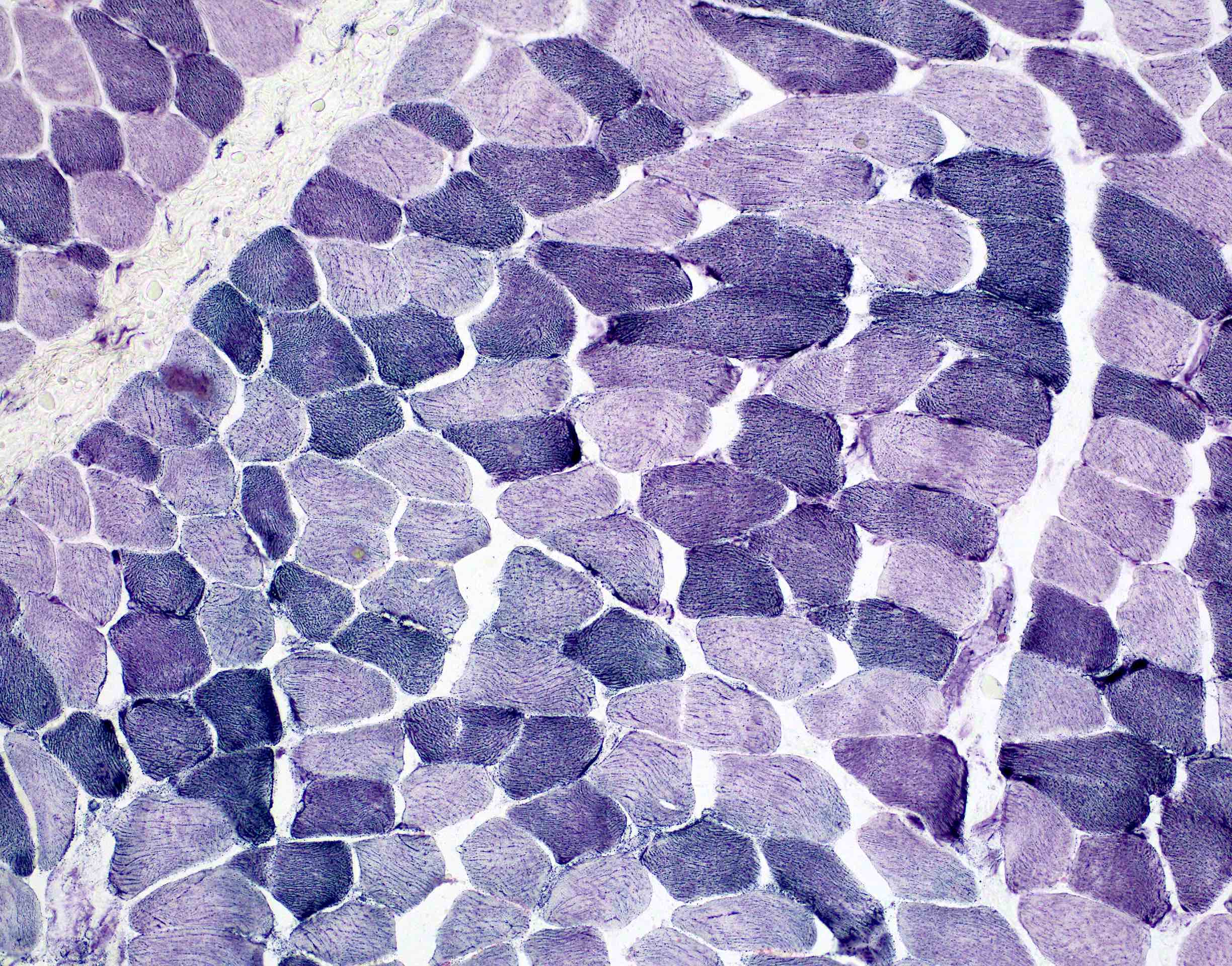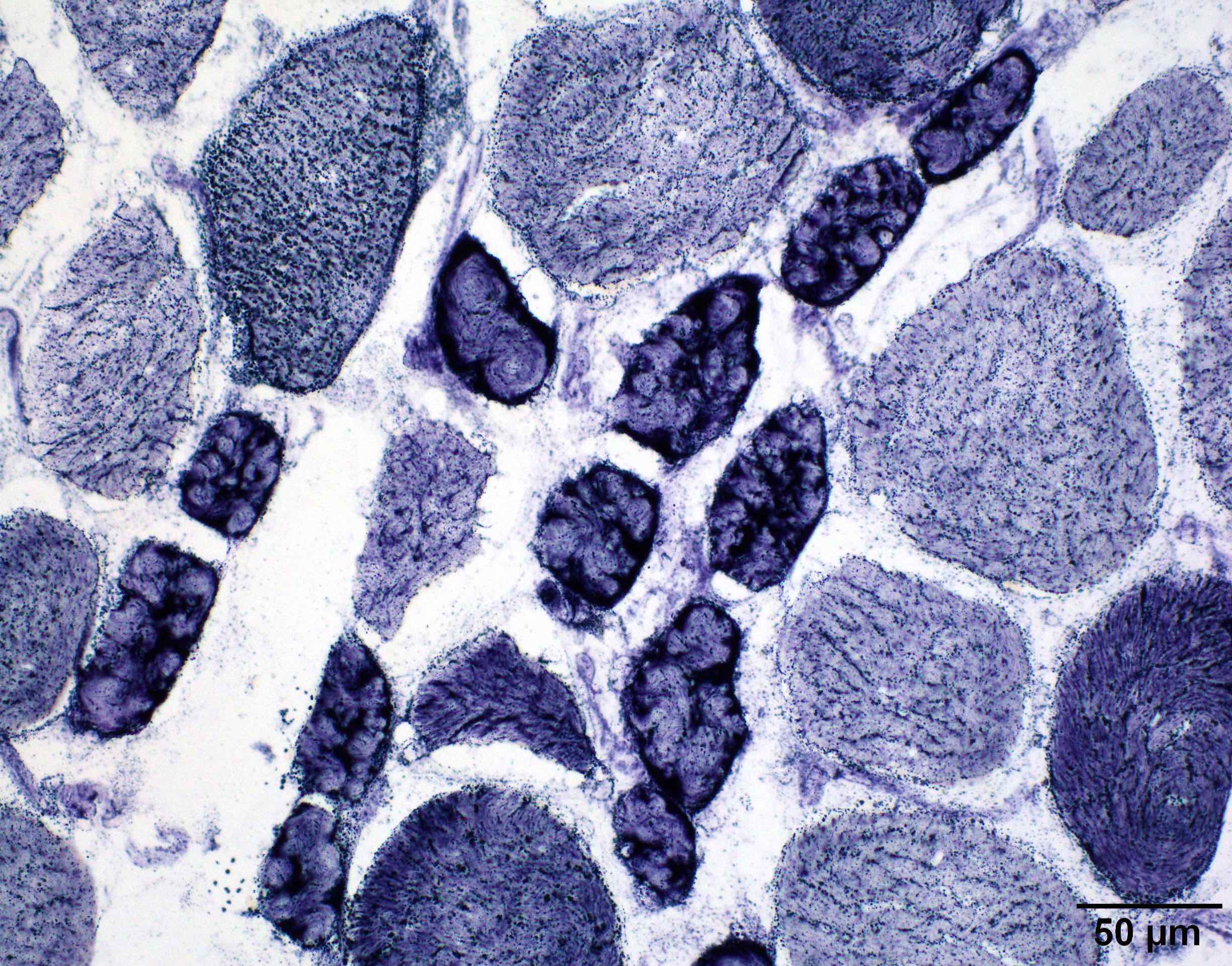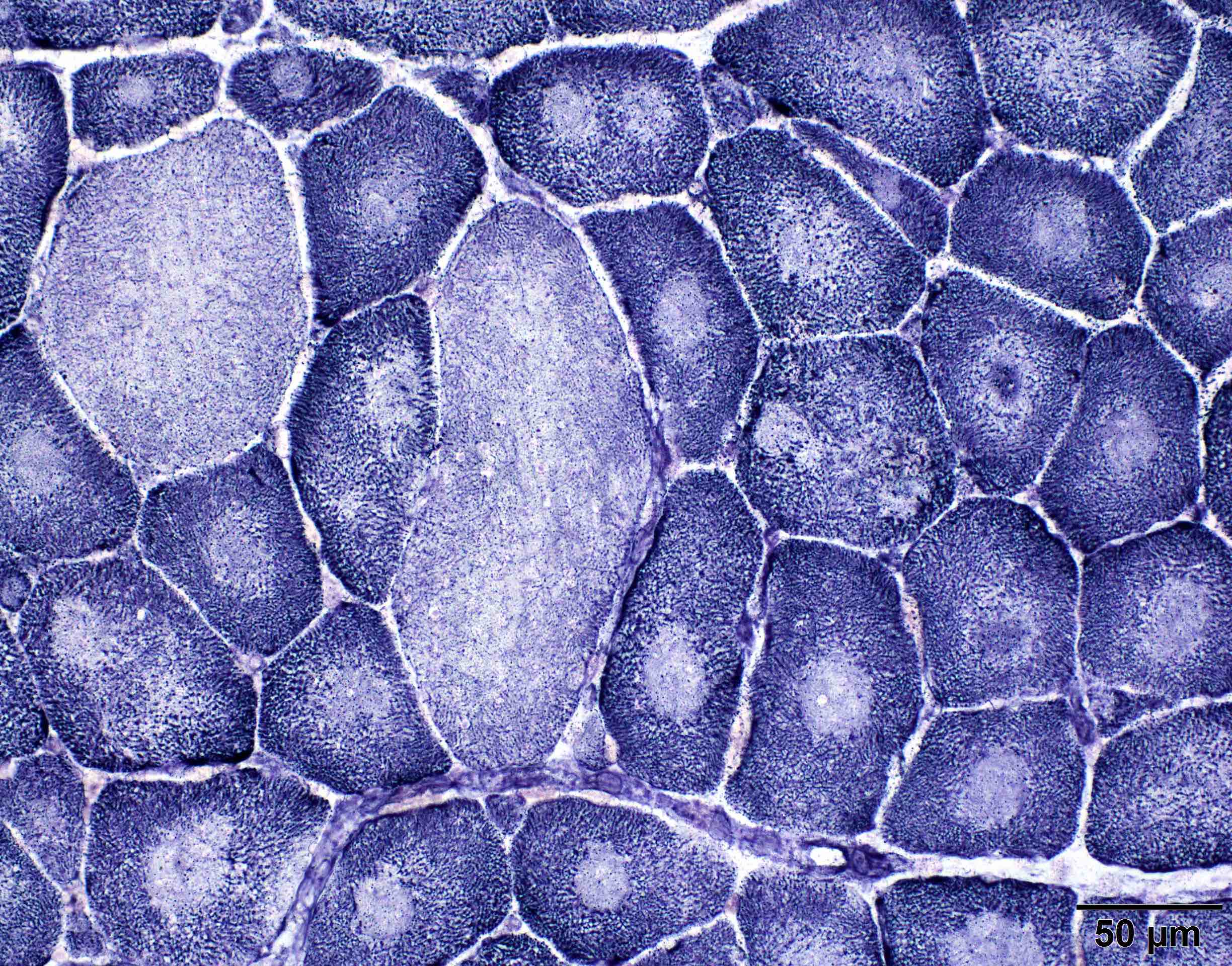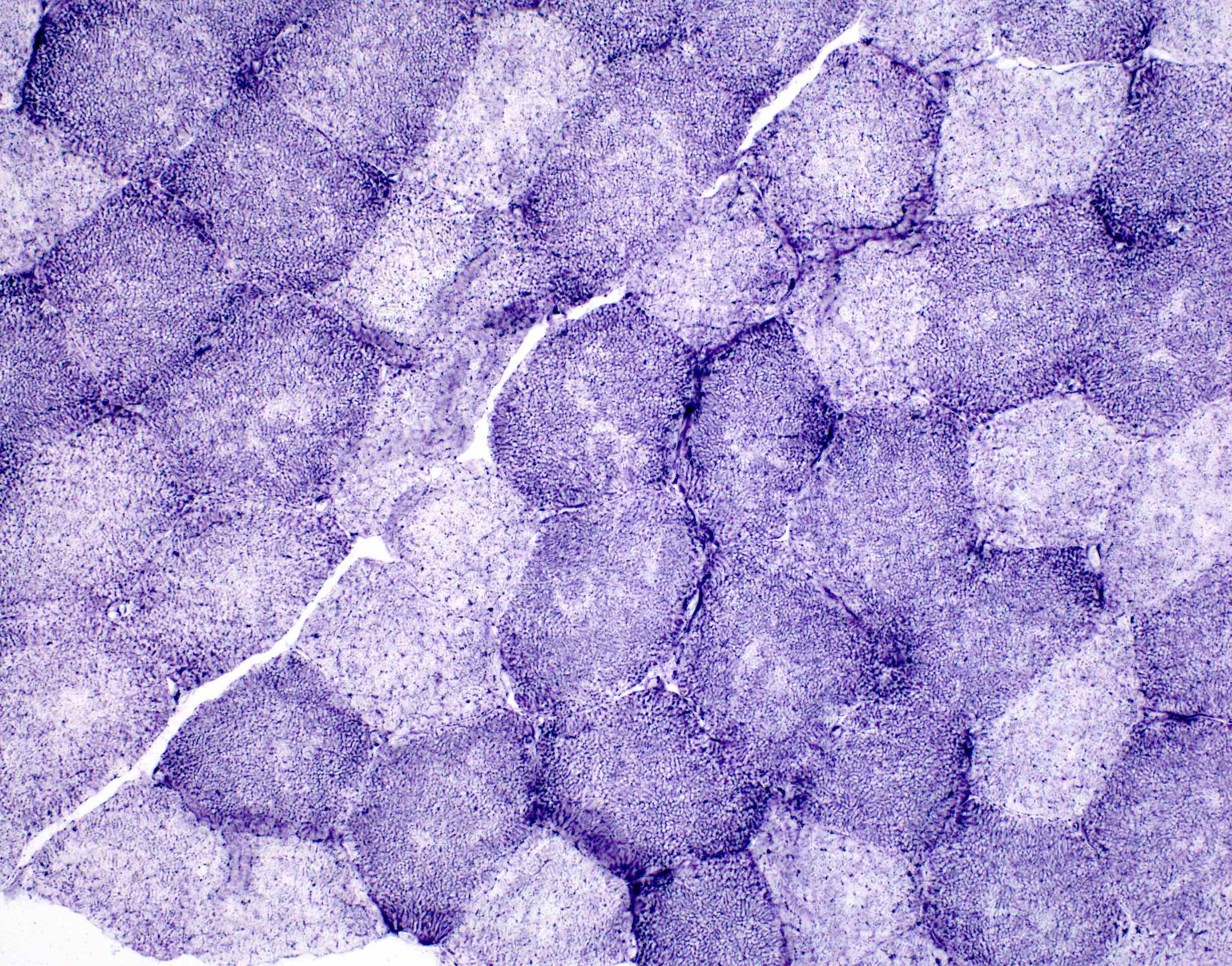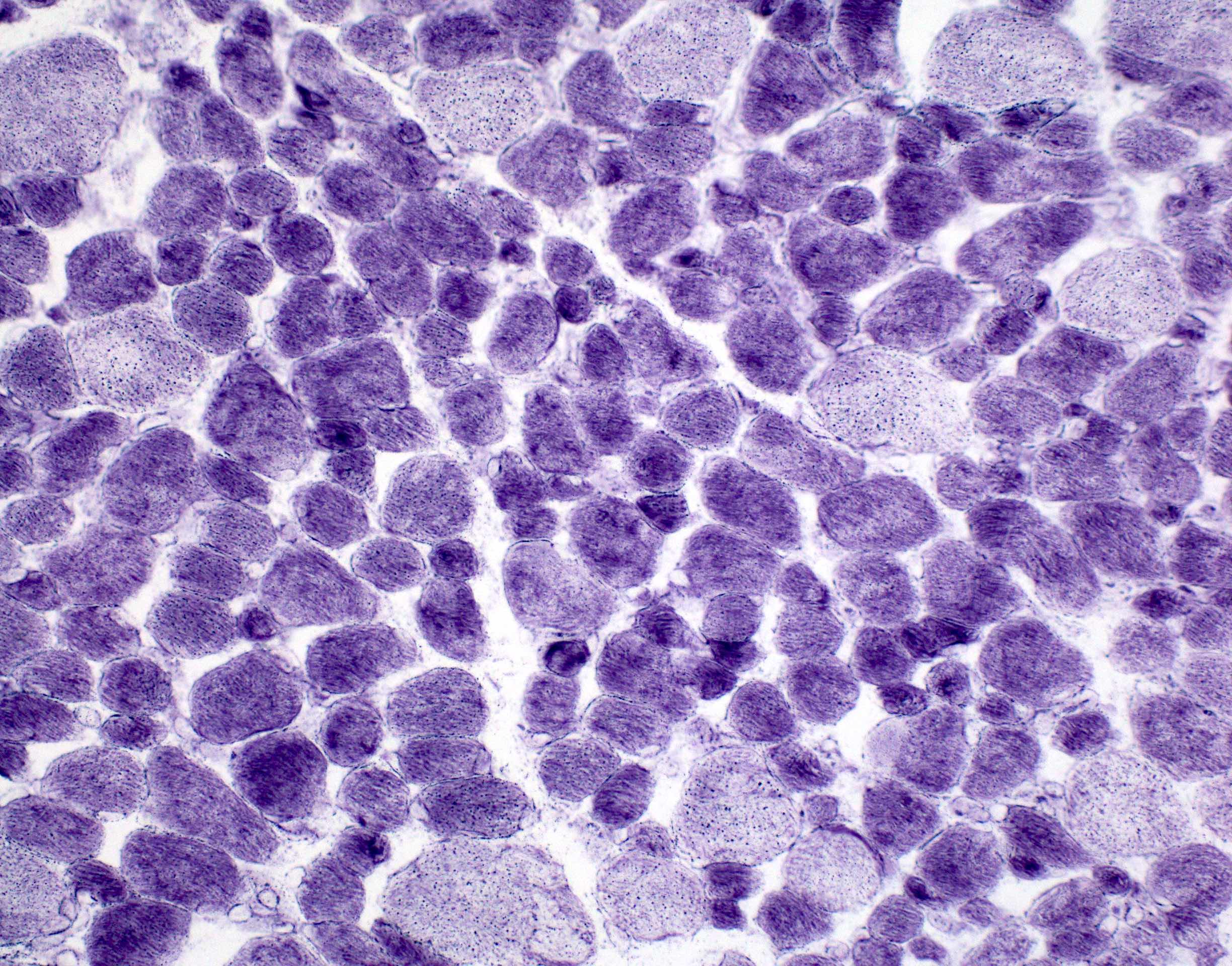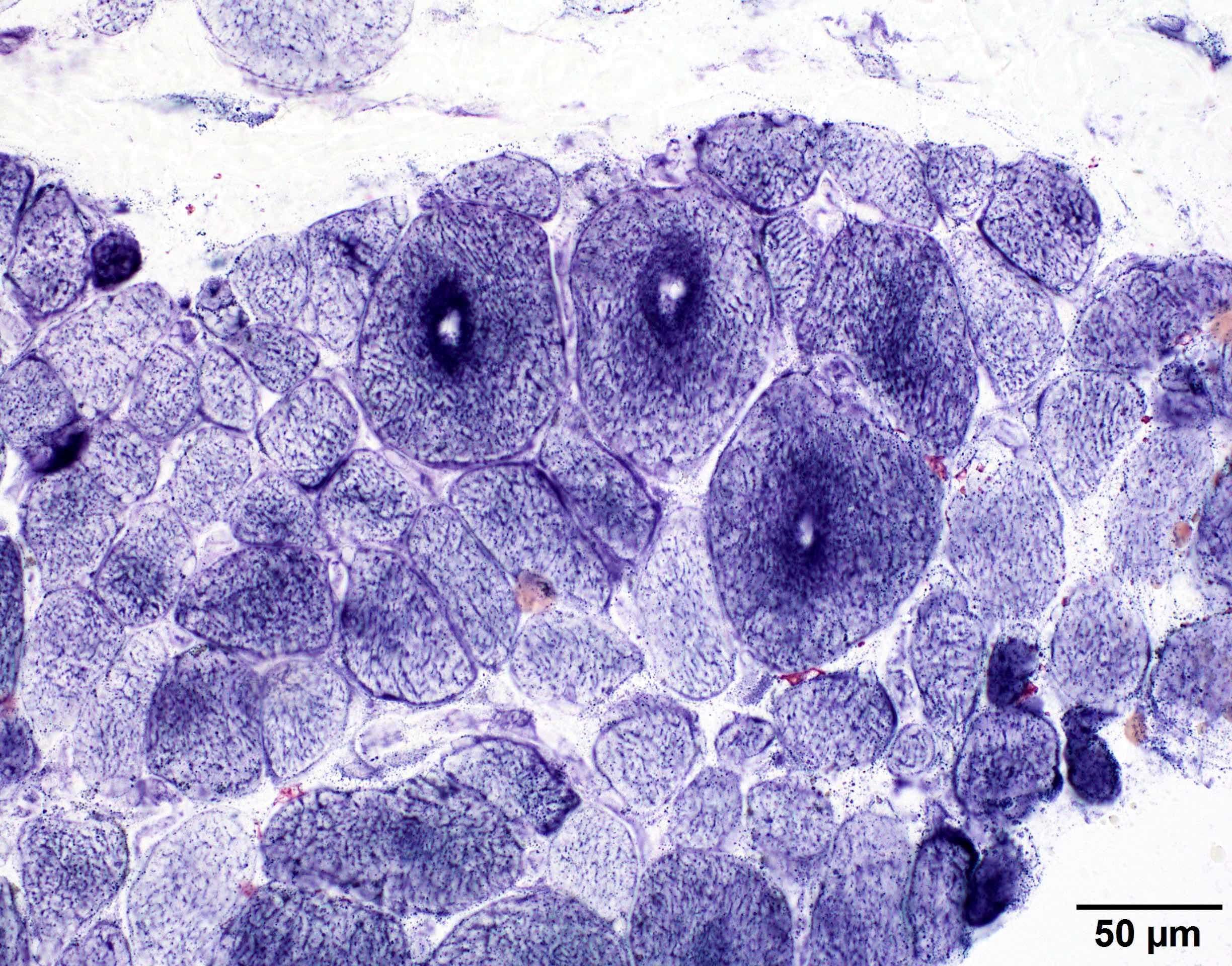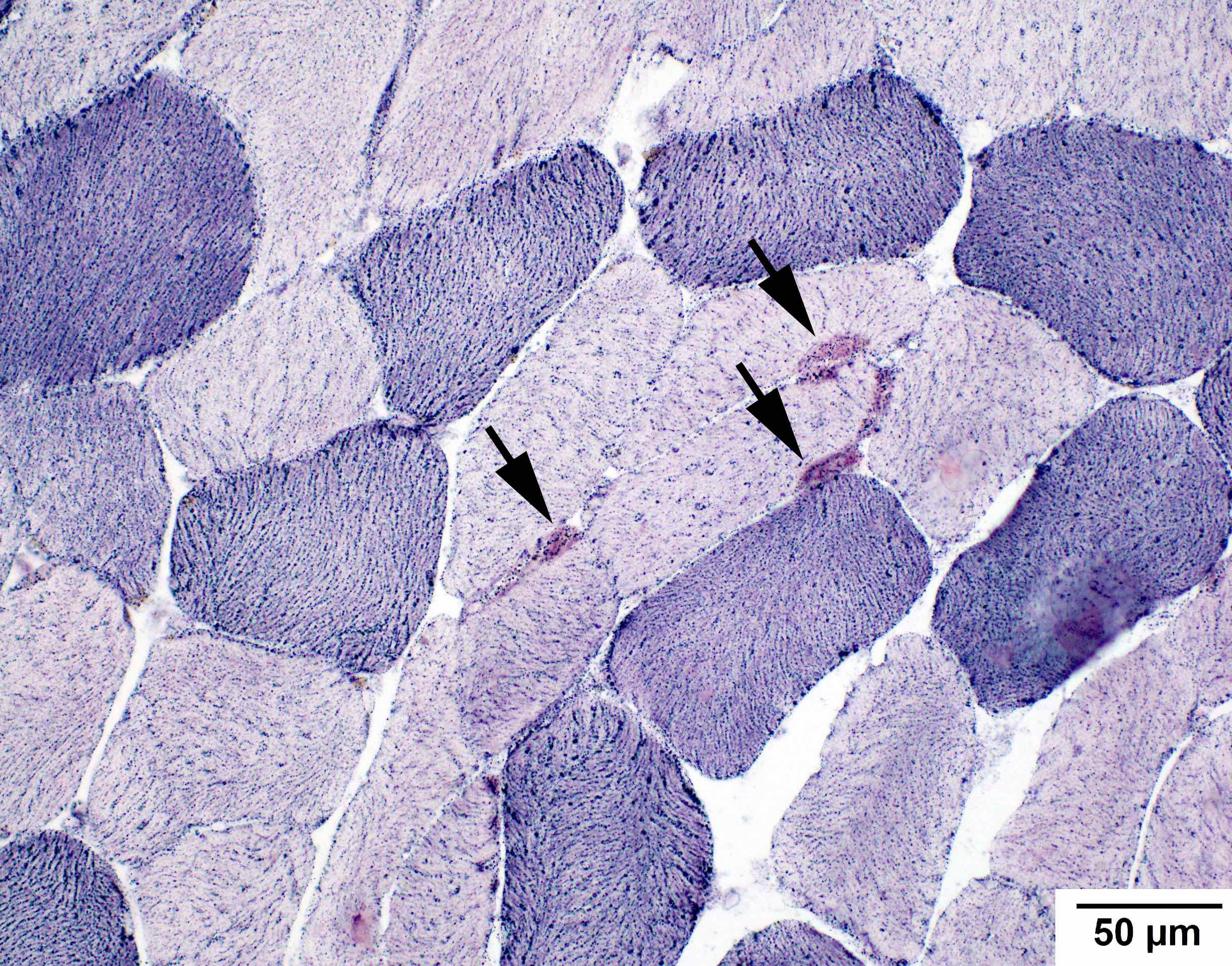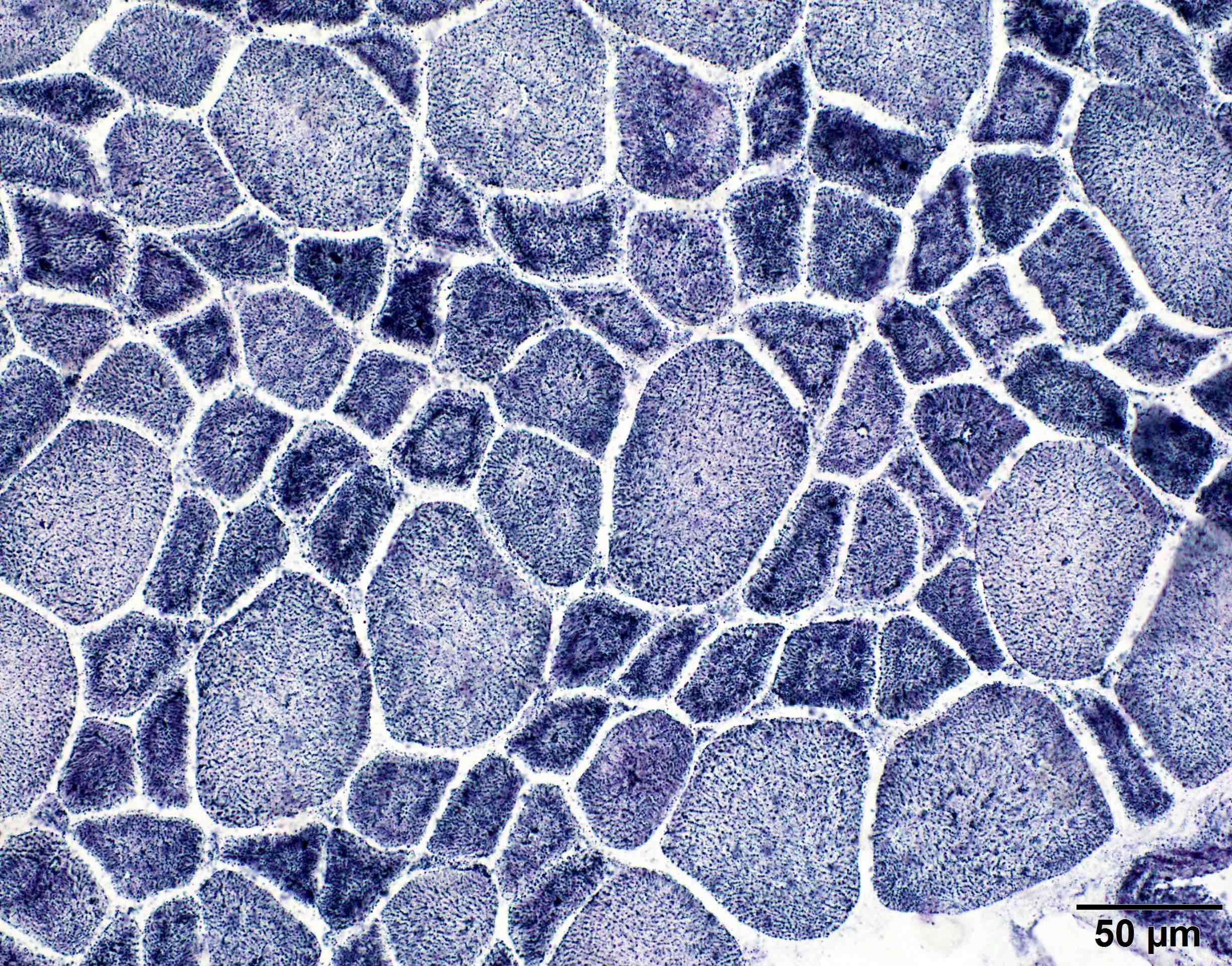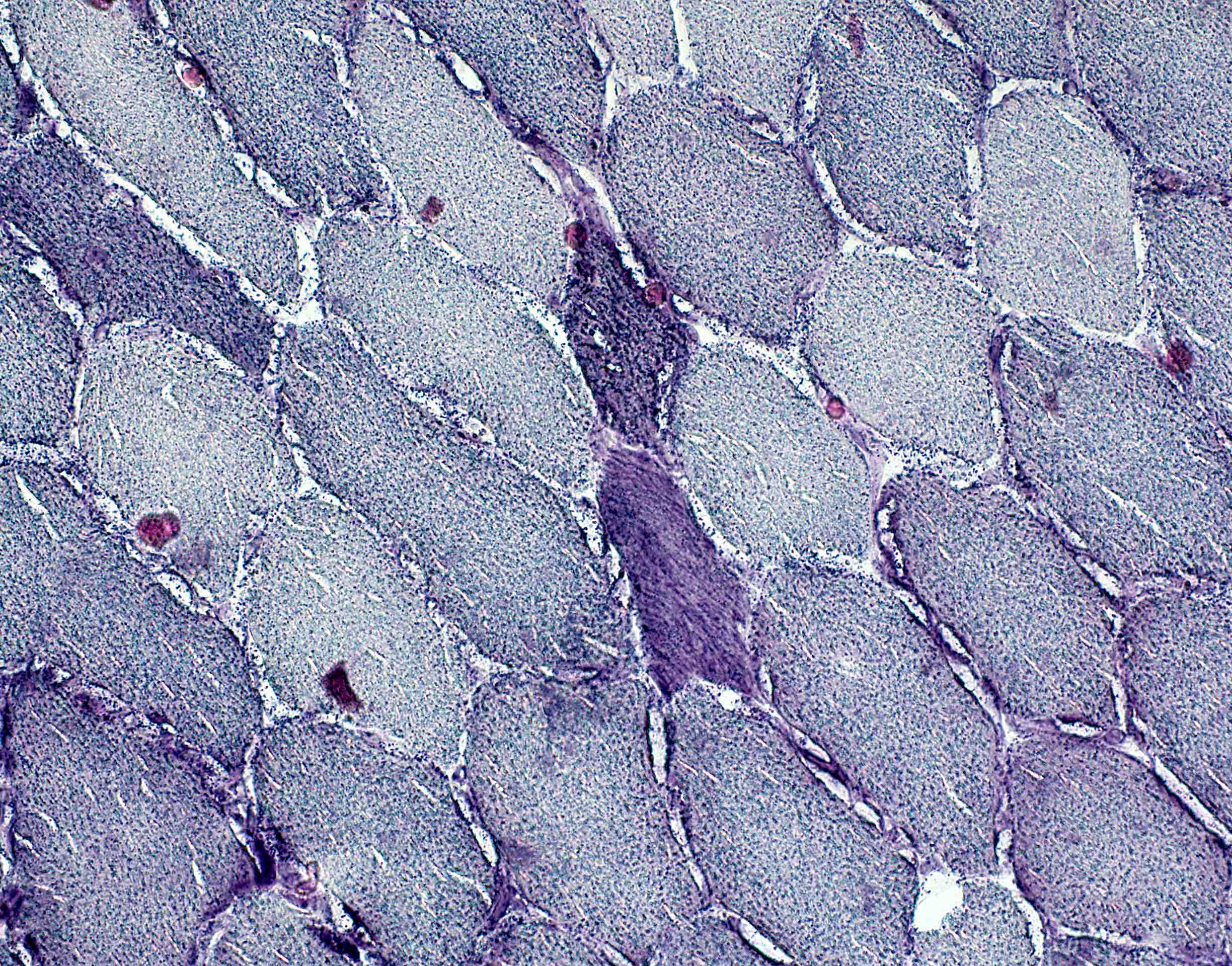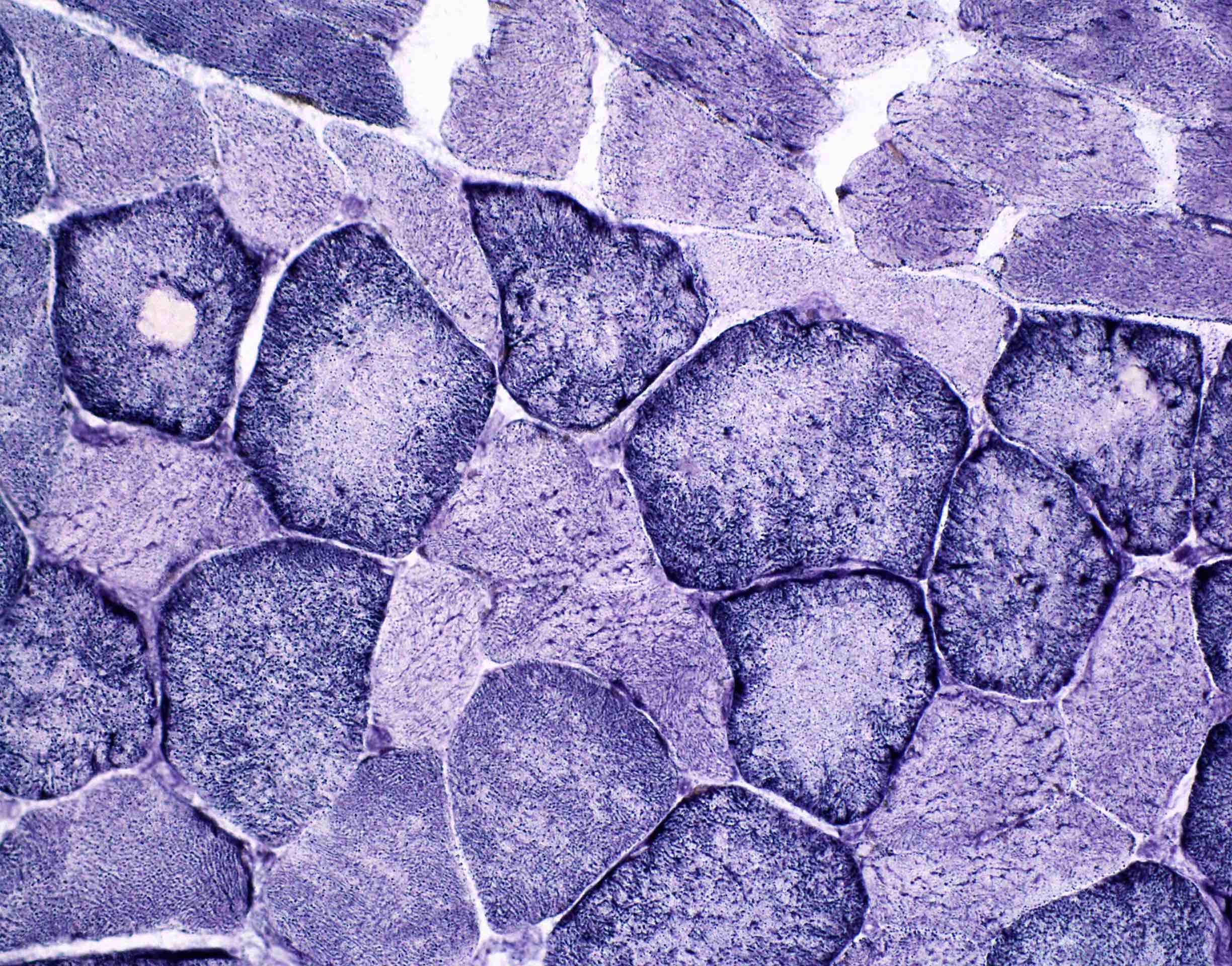Table of Contents
Definition / general | Essential features | Terminology | Interpretation | Uses by pathologists | Microscopic (histologic) description | Microscopic (histologic) images | Positive staining - normal | Positive staining - disease | Negative staining | Board review style question #1 | Board review style answer #1Cite this page: Vora M. NADH. PathologyOutlines.com website. https://www.pathologyoutlines.com/topic/NADH.html. Accessed April 19th, 2024.
Definition / general
- Nicotinadmide adenine dinucleotide (NADH) is a coenzyme that facilitates substrate reducing reactions associated with glycolysis, oxidative phosphorylation and fermentation
- NADH-TR stain protocol utilizes enzymatic activity to release hydrogen from NADH, producing a purple-blue formazan pigment that marks the reaction site
Essential features
- NADH enzyme histochemical stain reveals myofibrillar architecture, mitochondria and target fibers; it helps differentiate type I (oxidative) and type II (nonoxidative) fibers
- This technique demonstrates patterns of myofiber injury that are characteristic of congenital and mitochondrial myopathies and specific muscular dystrophies
- This stain protocol requires the use of snap frozen muscle biopsies
Terminology
- Nicotinamide adenine dinucleotide tetrazolium reductase (NADH-TR)
- Nicotinamide adenine dinucleotide diaphorase activity
Interpretation
- Mitochondria within sarcoplasmic network of striated muscle
Uses by pathologists
- Reveals architectural changes in the muscle, e.g., central cores, whorled, lobulated and moth eaten fibers; these changes assist in categorizing patterns of myofibril injury (J Histotechnol 2008;31:101, ScienceDirect: Tetrazolium Reductase [Accessed 2 February 2022])
- NADH diaphorase activity, in combination with myosin ATPase activity at pH 9.4, allows fibers to be classified into 3 categories:
- Slow twitch high oxidative (ST)
- Fast twitch high oxidative (FTH)
- Fast twitch low oxidative (FT)
Microscopic (histologic) description
- Speckled pattern within myofibers (J Histotechnol 2008;31:101)
- Intensity is proportional to number of mitochondria and NADH activity
- Type I oxidative fibers (dark, dense purple appearance)
- Type II nonoxidative fibers (light, scattered purple speckles)
Microscopic (histologic) images
Positive staining - normal
- Sarcoplasmic reticulum, T tubules and mitochondria (i.e., the intermyofibrillar network) (Goetz: Textbook of Clinical Neurology, 3rd Edition, 2007, ScienceDirect: Tetrazolium Reductase [Accessed 2 February 2022])
Positive staining - disease
- Nemaline myopathy: type I fiber atrophy and core-like areas devoid of enzyme activity (Mol Med Rep 2014;10:175)
- Mitochondrial myopathies: ragged blue fibers (J Bras Patol Med Lab 2018;54:325)
- Limb girdle muscular dystrophy type 2A: disorganized intermyofibrillar networks showing lobulated appearance (Pediatr Neonatol 2015;56:62)
- Myotonic dystrophy: ring fibers (Phys Med Rehabil Clin N Am 2012;23:609)
- Neurogenic atrophy: target fibers (Phys Med Rehabil Clin N Am 2012;23:609)
- Dermatomyositis: perifascicular atrophy (Phys Med Rehabil Clin N Am 2012;23:609)
- Myofibrillar myopathies: rubbed out myofiber appearance due to diminished or absent staining with NADH (Eur J Neurol 2015;22:1429)
- DNM2 related centronuclear myopathy: radial sarcoplasmic strands (Neuromuscul Disord 2014;24:97)
- Central core disease: type I fibers with central cores (Orphanet J Rare Dis 2007;2:25)
- Tubular aggregate myopathy: tubular aggregates within myofibrils (Int J Mol Sci 2016;17:1952)
Negative staining
- Myopathies related to toxic injury (Phys Med Rehabil Clin N Am 2012;23:609)
- Myopathies related to lipid metabolism (Phys Med Rehabil Clin N Am 2012;23:609)
- Myopathies related to glycogen metabolism except for debrancher enzyme deficiency (Phys Med Rehabil Clin N Am 2012;23:609)
Board review style question #1
In which type of myopathy is this characteristic pattern of injury typically seen by NADH-TR histochemistry?
- Central core disease (type I fibers with central cores)
- Debranching enzyme deficiency (ring fibers)
- Dermatomyositis (perifasicular atrophy)
- Mitochondrial myopathy (ragged blue fibers)
- Tubular aggregate myopathy (tubular aggregates)
Board review style answer #1




